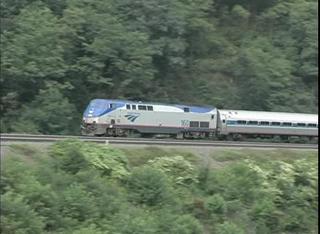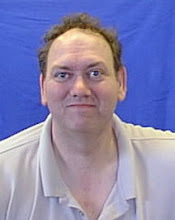From the magazine rack.........
Published quarterly issue number 67 covers October, November and December of 2005. I don't know the folks that print this magazine but I can tell you that they LOVE trains and that they take a great deal of pride in their work and product.
This is the second issue of the magazine that I have purchased off the rack in a book store and both have been outstanding. The photography work is nothing short of spectacular and the articles are written for someone much more intimate with the working of railroads than the novice fan writing these few words.
I remember the first few issues of Byte Magazine I picked up in the late 1970's early 1980's when I began my odyssey into the world of micro computers. A fair number of the articles were filled with terms and acronyms that left me scratching my head and trying to figure out just what they were talking about by taking them in context with the rest of the sentence or paragraph. Soon it all began to make sense and I knew that “serial port” and RS-232 were the same thing just spoken different ways.
So there was a time when if you said to me that a specific locomotive was a “2-6-2” I would have given you a quizzical look and had not a clue as to why you were calling it that. I would point out that this was not the number on the side of the train in the picture and the numbers that were there had no dashes between them. Slowly but surely I began to learn some of the terminology, the lingo of the hobby as it were. I still have a long way to go before I can carry on anything approaching an intelligent conversation with someone who really knows what they are talking about when it comes to rail fanning but I am learning. That is part of the fun.
So if you are like me and have an above average interest in trains but are a real neophyte to the wonderful world of rail roads there are several things you can do to increase your knowledge of the subject. Stop by your favorite dispenser of written material be it the local library, book store or news stand and pick up some magazines on the subject. I highly recommend TRAINS and The RAILROAD Press. Both outstanding publications. Then find others that share your passion for the hobby and find a way to get together with them. Offer to buy a cup of coffee or some other liquid libation ask a few questions to get a conversation started then keep your mouth closed, listen and learn. I have found with any hobby activity that I get involved with there is an incredible amount of knowledge and wisdom passed on by word of mouth from those that have been involved for a long period of time. Oh and don't forget to enjoy the interaction. Some of my best memories of ham radio, computers, firearms and now rail fanning are of sitting around with a group of like minded individuals just shooting the breeze. Sometime I will have to make a point to record or write down some of the stories that I have heard so that they can be preserved here on the blog. Until then keep listening and reading.





